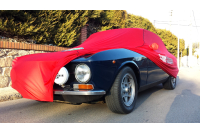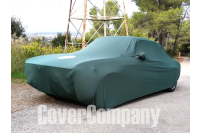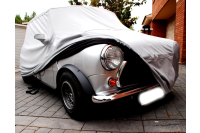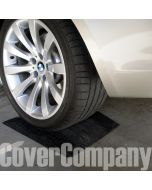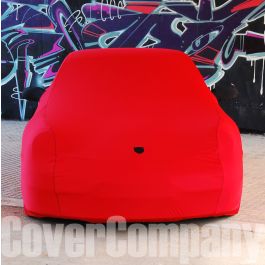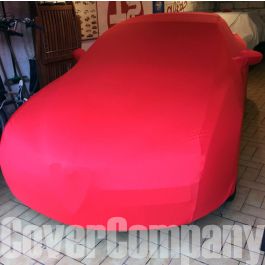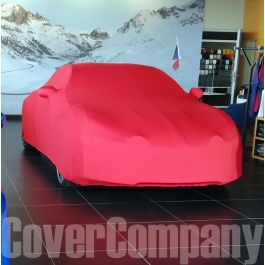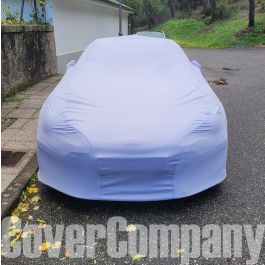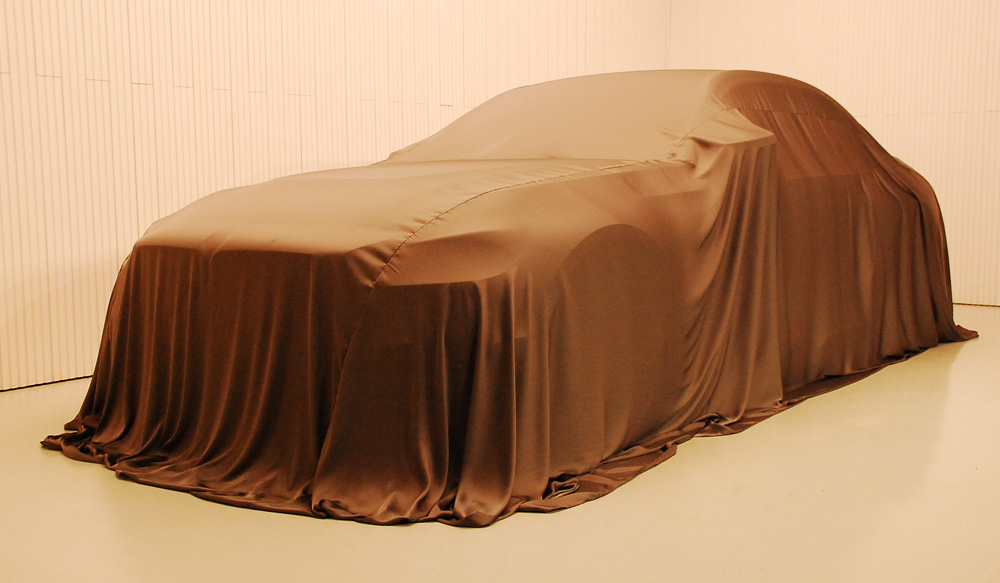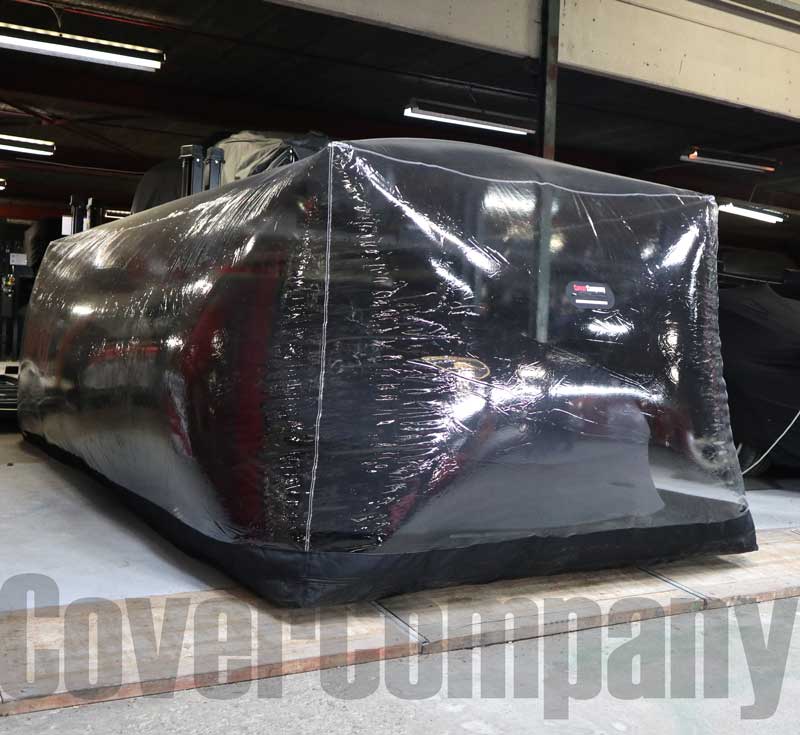Winterizing Your Classic Car: A Comprehensive Guide to Fall Preparation
Winterizing Your Classic Car: A Comprehensive Guide to Fall Preparation
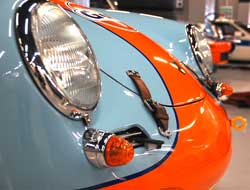
As the leaves begin to change and a chill fills the air, classic car enthusiasts often face a bittersweet moment. The arrival of fall signifies that winter is not far behind, and it's time to prepare your beloved classic car for its hibernation. Properly winterizing your vintage automobile is not just about protecting it from the harsh elements; it's a crucial aspect of maintaining and even increasing its value. In this comprehensive guide, we will explore the importance of fall preparation for classic cars and discuss essential accessories such as indoor covers, tire protection cushions, and battery maintainers.
Why Winterization Matters
Before delving into the specifics of how to prepare your classic car for the winter months, let's consider why this process is so important. Classic cars are not just vehicles; they are investments, often holding significant sentimental and financial value. Properly winterizing your classic car ensures that it remains in pristine condition and retains or even appreciates in value over time. Here are some compelling reasons to prioritize winterization:
1. Protection from Harsh Elements: Winter can be brutal on vehicles, and classic cars are no exception. The cold, snow, ice, and road salt can cause significant damage to the exterior, undercarriage, and internal components of your classic car. Proper preparation helps shield it from these elements.
2. Preventing Rust: One of the greatest threats to classic cars during the winter is rust. Road salt accelerates corrosion, and a rusted frame or body can significantly devalue your vehicle. Effective winterization can minimize this risk.
3. Avoiding Dead Batteries: Cold weather is notorious for draining car batteries. A dead battery can be a real hassle when spring arrives, potentially requiring a costly replacement. A battery maintainer can help prevent this issue.
4. Preserving Interior and Upholstery: Low temperatures and moisture can cause damage to your classic car's interior, including the upholstery, dashboard, and electronics. By properly winterizing your car, you can protect these components from harm.
5. Peace of Mind: Knowing that your classic car is well-prepared for the winter months can provide peace of mind. You can rest easy knowing your investment is secure and will be ready to hit the road once the snow melts.
Now that we understand why winterization is crucial, let's explore some key accessories and steps to ensure your classic car remains in pristine condition during the winter.
- Indoor Car Cover
Investing in a high-quality indoor car cover is perhaps the most crucial step in winterizing your classic car. An indoor cover acts as a shield against dust, dirt, and moisture, keeping your vehicle's exterior in top-notch condition. When choosing a cover, consider these factors:
-
- Material: Opt for a cover made of breathable and soft fabric that won't scratch your car's paint. Materials like polyester or flannel work well.
- Custom Fit: Look for a cover specifically designed for your classic car's make and model. A custom fit ensures that every contour is protected.
- Multi-Layered: Multi-layered covers provide additional insulation and protection against harsh temperatures.
- Locking Mechanism: Some covers come with locking mechanisms to keep your car secure and prevent theft.
- Ventilation: Ensure that the cover has adequate ventilation to prevent condensation buildup, which can lead to mold and mildew.
Regularly clean and dry the cover to prevent the accumulation of dirt and moisture. By using an indoor cover, you're not only protecting your classic car's exterior, but you're also preserving its value and aesthetics.
2. Tire Protection Cushions
Tires are often overlooked when it comes to winterizing classic cars, but they play a significant role in maintaining your vehicle's value. Tire protection cushions are designed to prevent flat spots and cracking caused by long-term storage. These cushions sit beneath the tires and bear the weight of the vehicle, ensuring even weight distribution. Here's why they are essential:
- Preventing Flat Spots: When a car sits in one place for an extended period, the weight of the vehicle can create flat spots on the tires. These flat spots not only affect the ride quality but can also lead to costly tire replacements.
- Minimizing Tire Cracking: Extreme temperatures and lack of movement can cause tires to crack. Tire cushions reduce the strain on the tires, preventing cracks and preserving their integrity.
- Maintaining Suspension: By supporting the weight of the car evenly, these cushions also help preserve the suspension components, ensuring your classic car's ride quality remains intact.
Incorporating tire protection cushions into your winterization routine is an investment in the long-term value of your classic car.
3. Battery Maintainers
One of the most common problems classic car owners face after winter hibernation is a dead battery. Cold temperatures can quickly drain a battery's charge, leaving you with a vehicle that won't start. A battery maintainer, also known as a trickle charger, is a solution to this issue. Here's why it's essential:
Maintaining Battery Charge: A battery maintainer monitors the charge of your car's battery and provides a small, constant charge to keep it at an optimal level. This ensures that your classic car starts reliably when you're ready to take it out of storage.
Preventing Sulfation: Sulfation is a common issue in batteries left unused for extended periods. Battery maintainers help prevent sulfation, which can damage the battery and reduce its lifespan.
Simple Installation: Battery maintainers are easy to install and require minimal maintenance. They are a cost-effective solution for protecting your classic car's battery.
Long-Term Battery Health: By maintaining the health of your classic car's battery, you're extending its lifespan, saving money on replacements, and ensuring that your vehicle is always ready to hit the road.
4. Fuel Stabilizer
If you plan to store your classic car for an extended period, consider using a fuel stabilizer. When gasoline sits in the tank for a long time, it can degrade and lead to engine problems. A fuel stabilizer prevents the fuel from breaking down and causing issues such as clogs and varnish buildup. It's a simple but effective way to preserve the engine and fuel system of your classic car.
To use a fuel stabilizer, follow these steps:
- Fill your gas tank to about 95% capacity to minimize moisture buildup.
- Add the recommended amount of fuel stabilizer according to the product's instructions.
- Run the engine for a few minutes to ensure that the treated fuel reaches the entire fuel system.
- Store your classic car as usual, and the stabilizer will help preserve the fuel during the winter months.
- Using a fuel stabilizer is a proactive measure to protect the engine and ensure your classic car remains in pristine condition.
5. Comprehensive Cleaning and Maintenance
Before storing your classic car for the winter, it's essential to give it a thorough cleaning and perform routine maintenance. Here's a checklist to guide you:
- Wash and Wax: Clean the exterior of your car, removing all dirt and contaminants. Apply a high-quality wax to protect the paint during storage.
- Interior Cleaning: Vacuum the interior, clean the upholstery, and wipe down all surfaces. Use a leather conditioner if your car has leather seats.
- Fluids: Check all fluid levels, including oil, coolant, and brake fluid. Top them up as needed, and consider changing the oil if it's close to the next service interval.
- Tire Pressure: Ensure your tires are properly inflated to the manufacturer's specifications. Overinflated or underinflated tires can lead to damage.
- Brakes: Inspect the brake system for any issues. If you notice any problems, address them before storing your car.
- Exhaust System: Check for any signs of rust or damage in the exhaust system. Repair any issues to prevent further deterioration.
- Cover Installation: Finally, install the indoor cover to keep your classic car protected from dust and debris throughout the winter.
By following this comprehensive cleaning and maintenance checklist, you are not only preserving your classic car's value but also ensuring that it's ready for a smooth and trouble-free spring awakening.
In Conclusion
Winterizing your classic car is more than just a seasonal chore; it's a critical aspect of maintaining and increasing its value. A combination of the right accessories, including an indoor cover, tire protection cushions, and a battery maintainer, along with comprehensive cleaning and maintenance, can ensure your classic car remains in pristine condition during its winter slumber.
Protecting your investment is essential for classic car enthusiasts, and proper winterization is the key to that protection. By following these steps and investing in the necessary accessories, you'll not only safeguard your classic car but also ensure that it continues to be a source of joy and pride for years to come. When spring arrives, your classic car will be ready to hit the open road, in all its restored glory, thanks to the effort you put into its winter care.
What Our Customer Are Saying...
-
PERFECT PROTECTION GOLDWING 1500 By: Gilles COHARD
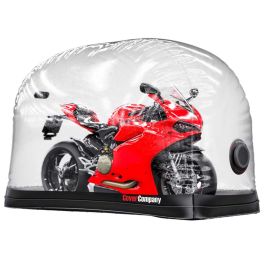 Very satisfied with this indoor size L cover (2.8 m x 1.2 m x 1.6 m) for the Goldwing 1500. Unfold carefully as the package is vacuum-sealed and the transparent part is very sticky. I installed it by myself. Be careful to position the antennas correctly. Consider using protection under the center and side stands to preserve the cover. No instructions in French. This cover is not cheap, but it really does the job. I highly recommend it. CoverCompany responds quickly to questions, which is much appreciated.
Very satisfied with this indoor size L cover (2.8 m x 1.2 m x 1.6 m) for the Goldwing 1500. Unfold carefully as the package is vacuum-sealed and the transparent part is very sticky. I installed it by myself. Be careful to position the antennas correctly. Consider using protection under the center and side stands to preserve the cover. No instructions in French. This cover is not cheap, but it really does the job. I highly recommend it. CoverCompany responds quickly to questions, which is much appreciated. -
Decent quality for the price By: Paul
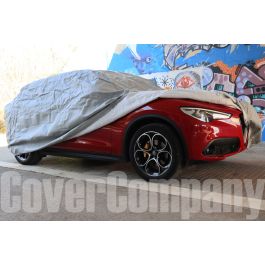 Cover is good quality. Being a standard fit cover it's designed to fit large SUV vehicles which is slightly too big for a Stelvio, but it's better that it's oversized than too small. It's never going to fit back into the storage bag or case that came with it so will have to find another way of storing it which is disappointing. Took about 10 days to get to the UK. - Answer by Cover Company: Thanks for your feedback Paul. The package includes an additional storage bag to store the cover once it has been used,
Cover is good quality. Being a standard fit cover it's designed to fit large SUV vehicles which is slightly too big for a Stelvio, but it's better that it's oversized than too small. It's never going to fit back into the storage bag or case that came with it so will have to find another way of storing it which is disappointing. Took about 10 days to get to the UK. - Answer by Cover Company: Thanks for your feedback Paul. The package includes an additional storage bag to store the cover once it has been used,


